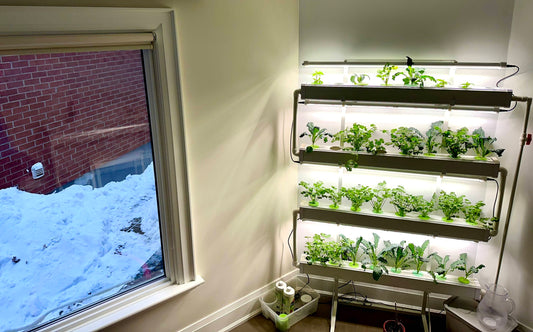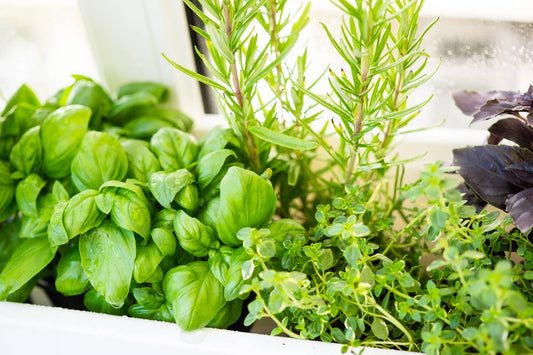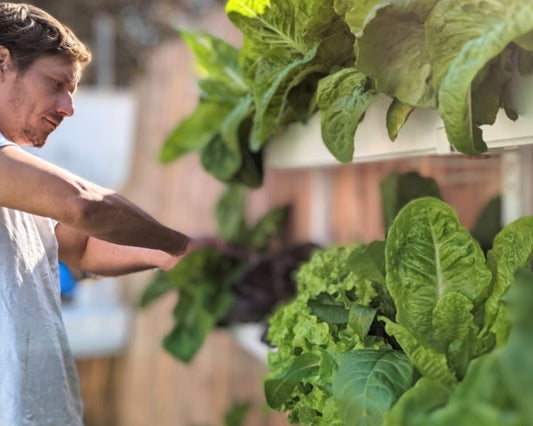Hydroponics is a revolutionary method of growing plants without soil. The word "hydro" in hydroponics comes from the Greek word for water, highlighting its foundational role in this system. Unlike traditional gardening, where soil acts as a medium to deliver nutrients to plant roots, hydroponics relies on nutrient-rich water to perform this critical function. By maintaining an optimal balance of four key elements—nutrients, pH levels, temperature, and oxygen—hydroponic systems can produce faster and stronger plant growth compared to conventional methods.
1. Nutrients: Macro and Micro
In a hydroponic system, plants receive all their essential nutrients directly from the water solution. These nutrients are categorized into two groups:
-
Macronutrients: These are the primary nutrients that plants need in large amounts, including nitrogen (N), phosphorus (P), and potassium (K). These elements support vital functions like growth, flowering, and fruiting. Calcium, magnesium, and sulfur are also part of this category.
- Micronutrients: Though needed in smaller quantities, micronutrients like iron, manganese, zinc, copper, boron, and molybdenum play a critical role in plant health. They aid in enzymatic processes, chlorophyll production, and disease resistance.
The nutrient solution in a hydroponic system must be carefully balanced to provide the right amounts of both macro and micronutrients. This is achieved by using pre-mixed hydroponic nutrient solutions or custom formulations tailored to specific plants. Regular monitoring and replenishment of nutrients are essential to maintain optimal growth.
2. pH Levels: Striking the Right Balance
pH is a measure of how acidic or alkaline the water in a hydroponic system is. Maintaining the correct pH is crucial because it directly affects the availability of nutrients to the plants. Most hydroponic plants thrive in a slightly acidic environment, with a pH range of 5.5 to 6.5. If the pH falls outside this range, certain nutrients may become inaccessible to the plant, leading to deficiencies and stunted growth.
To ensure a stable pH, growers use pH testing kits or digital meters to regularly check the water solution. If adjustments are needed, pH-up or pH-down solutions can be added. Maintaining the ideal pH not only enhances nutrient absorption but also promotes overall plant health.
3. Temperature: Creating the Perfect Climate
Temperature is another critical factor in hydroponics, as it influences both plant growth and the stability of the nutrient solution. For most plants, the ideal water temperature in a hydroponic system is between 65°F and 75°F (18°C to 24°C). Temperatures outside this range can lead to problems:
- Too High: Warm water can reduce oxygen levels and promote the growth of harmful pathogens like root rot.
-
Too Low: Cold water can slow down plant metabolism and nutrient uptake, hindering growth.
To maintain the right temperature, growers often use water heaters or chillers, depending on the climate. Additionally, insulating the reservoir and placing it away from direct sunlight or heat sources can help regulate temperature.
4. Oxygen: Essential for Root Health
Oxygen is vital for plant roots to breathe and carry out essential functions. In hydroponic systems, oxygen is typically supplied through the growing method itself. For example:
-
Deep Water Culture (DWC): Air pumps and stones are used to oxygenate the water.
-
Nutrient Film Technique (NFT): Roots are exposed to air while a thin film of nutrient solution flows over them.
-
Drip Systems: Regular dripping allows roots to access oxygen between waterings.
By ensuring that roots receive sufficient oxygen, hydroponic systems create an environment where plants can thrive without the risk of drowning, which can occur in overwatered soil-based systems.
Beyond Water: Additional Factors for Plant Growth
While water and the four key elements—nutrients, pH, temperature, and oxygen—are the foundation of a hydroponic system, plants also require other environmental factors for healthy growth. These include:
-
Light: Whether natural sunlight or artificial grow lights, plants need adequate light for photosynthesis. In indoor setups, LED grow lights are often used to provide the right spectrum and intensity.
a link to buy our grow light should be added
-
Humidity: Proper humidity levels help prevent diseases and promote efficient water uptake.
-
Air Circulation: Good airflow reduces the risk of mold and pests while strengthening plant stems.
-
Support Structures: Without soil, plants often need support in the form of trellises, stakes, or netting.
By addressing these additional factors, growers can create an ideal environment for plants, ensuring robust and consistent yields.
Conclusion
Hydroponics is a sophisticated and efficient method of growing plants that leverages water as its core medium. By carefully managing the four key elements—nutrients, pH levels, temperature, and oxygen—growers can achieve remarkable results, from faster growth to higher yields. While hydroponics requires careful attention to detail, it offers unparalleled benefits for both commercial and home growers. Paired with the right light and environmental conditions, hydroponic systems have the potential to transform the way we grow food, making it more sustainable and accessible for future generations.




